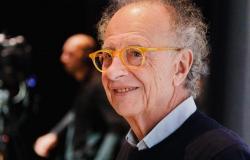Reggio Emilia, 7 April 2024 – Is dead in Milan, where he was born in 1953, Italo Rotacentral figure of contemporary culture, architect who has the reorganization of the Palazzo dei Musei was signed of our city.
Together with Elisabetta Farioli, director of the Civic Museums at that time, he wanted to leave traces of his work in the volume ‘Io sono Museo’, which he presented to the city in June two years ago.
And it is precisely to remember it Elisabetta Farioli: “He was a man of very high culture and loved our museum very much. I was never able to consider him a starchitect. He showed up punctually for work in the morning and did not shy away from any commitment, even on weekends and holidays .
Learn more:
Italo Rota, the memory of Stefano Boeri: “Brilliant and provocative. The last meeting? Moving”
He was always animated by a spirit of collaboration, which did not exclude any of the staff from the choices: always shared, because we were a collective. I learned a lot from him. He was never satisfied, he always questioned the result he had just achieved to see if the bar could be raised further. At first I was even a little annoyed, then his constant desire to test us was a life lesson. He had a very strong intuition in finding the links between the traces of our history. He was also a collector and was able to enhance our important collections by relating them to the other rooms, creating itineraries capable of interesting not only a local audience.”
The project by Italo Rota has relaunched the identity of our city museum, redefining its role and space, managing to create a sort of crossroads where history, artistic heritage, technology, traditions, past and present could speak to the future, to the new generations. Italo Rota in Reggio Emilia has launched a new museum idea – which other cities have looked to – capable of telling the story of our territory.
“We worked more like a film, which travels through time and space, so that people can come into contact with both things and stories”, he told reporters on May 2, 2014, the day of the inauguration.
A living archive, capable of speaking to visitors of all ages, because it is organized on multiple narrative levels and across multiple disciplines.
The president of Triennale Milano, Stefano Boeri, said: “We will certainly have the funeral home in the Triennale, which is his home.”






